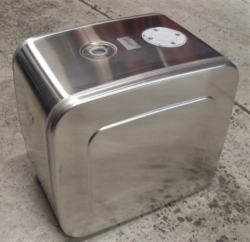-
BLACKOUT TECHNOLOGIES TARGETS SMARTPHONE DISTRACTION BEHIND THE WHEEL TO BOOST FLEET AND DRIVER SAFETY - 9 hours ago
-
NATUREWALL ANNOUNCES NEW PARTNERSHIP WITH ARROWXL - 10 hours ago
-
Tower Launches Customer Sustainability Hub with Practical Tools for Lower-Impact Pharmaceutical Cold Chain - October 16, 2024
-
Six decision-making models for best practice WMS digital transformation - October 16, 2024
-
“Transforming Logistics: Precision and Purpose” – BIFA takes centre stage - October 15, 2024
-
Eco-Friendly Introductions: Cover Letter Templates for Sustainable Logistics - October 10, 2024
-
JAMES JONES & SONS LTD EXPANDS ITS PALLETS & PACKAGING DIVISION THROUGH THE ACQUISITION OF HG TIMBER LTD - October 10, 2024
-
HUGO BECK EXPANDS MACHINE RANGE FOR E-COMMERCE, MAIL ORDER AND LOGISTICS - October 10, 2024
-
Winning Irish Exporter of the Year, Combilifts CEO Martin McVicar talks about the journey into the Global Market - October 8, 2024
-
JAMES JONES & SONS’ AUSTRALIAN SUBSIDIARY, HYNE GROUP, EXPANDS TO WESTERN AUSTRALIA - October 3, 2024
One of the first considerations to make when purchasing a hydraulic oil tank is build material. Steel and aluminium are two of the most common and each one features their own unique benefits. Whether it’s durability, weight, level of corrosion resistance or the sustainability of the material, it’s important to understand each solution fully to make an informed decision. Selecting the correct hydraulic oil tank solution for your system ensures maximum efficiency, safety and performance.
Pros Of Aluminium Oil Tanks
- Lightweight design to make transportation quick and simple.
- Durable and strong despite lightweight design. Far tougher than plastic tanks for example.
- Rust and corrosion resistant which will help to protect when used in environments where harsh chemicals are used.
Pros Of Steel Oil Tanks
- Highly durable design that will last many years.
- Features an anti-rust coating to give protection from corrosion.
- Steel contains a naturally high resistance to heat and fire – a great option for storing hydraulic oil.
- Environmentally friendly as steel tanks are recyclable to reduce waste.
Should You Choose A Steel Or Aluminium Hydraulic Tank?
There is no definitive answer when purchasing a steel or aluminium hydraulic tank. Both contain their own benefits and drawbacks and choice is dependent on your own preferences and requirements.
A steel hydraulic tank is a strong and durable option that is sure to last for many years if properly maintained. Steel hydraulic tanks come with a corrosion-proof lining although the material can be prone to corrosion with improper maintenance. Steel is also traditionally an inexpensive material so the cost of your tank should be lower.
Aluminium is a lightweight material that is easier to transport and install, making it a viable alternative to steel. A lighter build is generally preferred in the transport industry to reduce fuel consumption and save costs. It is also better equipped to deal with corrosion. Whilst aluminium seems like the obvious premium option out of the two, tanks made from this material will come at a higher cost.
What Are The Key Considerations To Make When Buying A Hydraulic Reservoir?
Capacity
You must be sure that your reservoir has a high enough capacity to hold your desired amount of oil.
Size
Consider the size of your reservoir to ensure that it isn’t physically too big or small to fit within your system.
The 10% Rule
Purchasing a reservoir with 10% more capacity than the minimum requirement of your system. A general rule your system should be two and a half times the size of the pump output per minute.
Coating
Some hydraulic reservoirs come with coatings that help to protect from risk of corrosion. Durable powder coat paint and galvanised are examples of this. A hydraulic tank with greater protection against corrosion is likely to have a longer overall lifespan.
Filters
Investing in an inline or internal filter for your tank will provide greater efficiency and protect your system from wear and tear. Filters are often available to purchase alongside your tank.
Interested In Investing In Aluminium Or Steel Hydraulic Reservoirs?
Choosing between aluminium and steel hydraulic reservoirs is entirely down to your budget and requirements. Both are capable additions to your hydraulic systems and each offers their own set of benefits to a user.
If you’re looking at investing in a hydraulic tank for your system, always use a trusted manufacturer. PCM Handling is an industry leader that manufactures high quality aluminium and steel tanks for the transport and commerce industry. They have over 30 years of experience in the sector and as a business, they are passionate about manufacturing quality solutions that are built to last.































